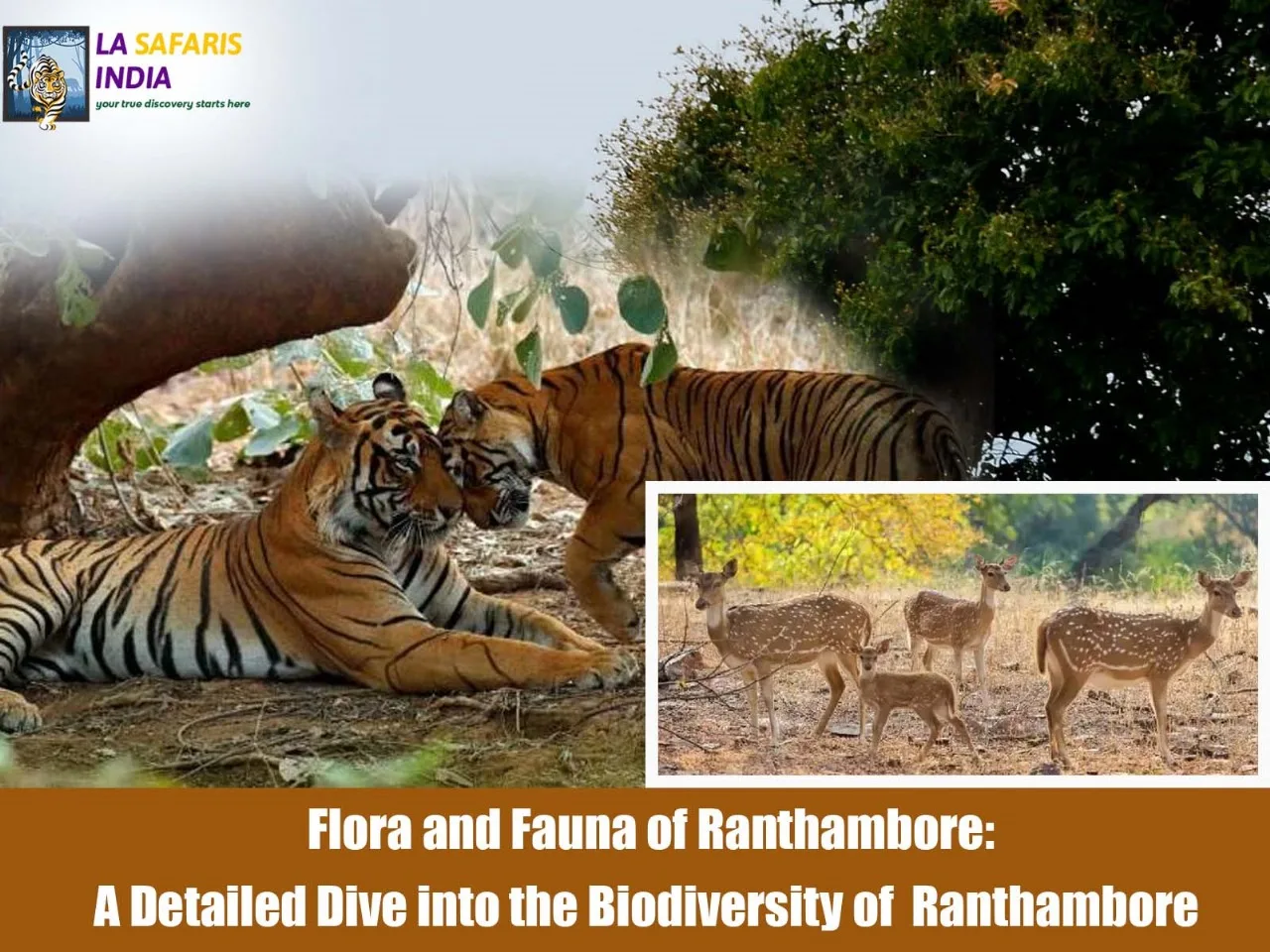Flora and Fauna of Ranthambore: A Detailed Dive into the Biodiversity of Ranthambore
Nestled in the state of Rajasthan in India, Ranthambore National Park is a charismatic land that embraces a vibrant topography. The varied diversity of habitats supports a large diversity of species, and consequently, it is one of the best examples of a region in perfect ecological balance. Therefore, it is an exquisite getaway for nature and wildlife enthusiasts. Ranthambore ranks as the best tiger safari tour from Delhi for those who wish to spend unforgettable moments.
Flora of Ranthambore
The dominant flora of the park would be dry deciduous, a combination of tropical dry forests and grasslands. Some of the important plant species are as follows:
- Dhok Tree: The dominating species seen in Ranthambore, it covers most of the park. It forms a vital source of food and shelter for most herbivores.
- Babul: This is a spiny tree found in the arid zones. With its nutritious leaves and pods, it provides sustenance to most herbivores in the park.
- Flame of the Forest: The flowers are highly coloured orange-red, adding to the colorfulness of the park landscape.
- Ber: Its small fruits form a very important food source for many animals, be it birds or mammals.
- Ronj: Widespread in valleys in this Park, its bark is used by indigenous people for medicating purposes.
Fauna of Ranthambore
Starting from the top predators down to the herbivores, numerous species find solace in Ranthambore and form a significant part of the park itself. To explore Ranthambore through its best, one needs to take up a Ranthambore Wildlife Safari Tour from Delhi.
- Bengal Tiger: The most renowned and the apex predator occupying the park, considered a significant lure for tourists.
- Indian Leopard: This relatively cryptic predator is one more aspect in the complex food chain of the park.
- Chital: The spotted deer, commonly found in groups, is preyed upon by some large predators in the park.
- Sambar Deer: The largest deer of India, having an important place in the maintenance of the park’s predator-prey balance.
- Sloth Bear: With its looks and rather unique termite diet, it becomes another interesting resident of Ranthambore.
Ranthambore Bird Species
This is not only a safe haven for mammals, but it is also a home to various species of birds. It is a perfect site to watch a large number of various kinds of birds, some of which are listed below:
- Indian Pitta: This beautiful-plumed bird with its melodious calls is best seen around the dense undergrowth of this park.
- Oriental Honey Buzzard: Large raptor that feeds on insects and small vertebrates; can often be seen soaring in the skies above Ranthambore.
- Great Horned Owl: A powerful nocturnal predator, its hooting sounds rumble through the park at night, further adding the mystique to the area.
- Kingfisher: Colourful, aerial hunter of fish residing near water bodies.
- Black-headed Ibis: A common resident around wetlands, it is identified by a black head with a white body.
- Indian Roller: Brilliant blue and green, it’s a roller perched usually on the trees and flying mostly in rolling flight.
From diversified flora to diversified fauna and avian species, Ranthambore National Park is enriched in biodiversity—wonderful examples of natural heritage in India. Making it functionally one of the most prominent wildlife reserves in India, as far as every species plays a vital role, giving it much importance. So, without a doubt, Ranthambore can be considered as one of the best tiger safari tours from Delhi.


